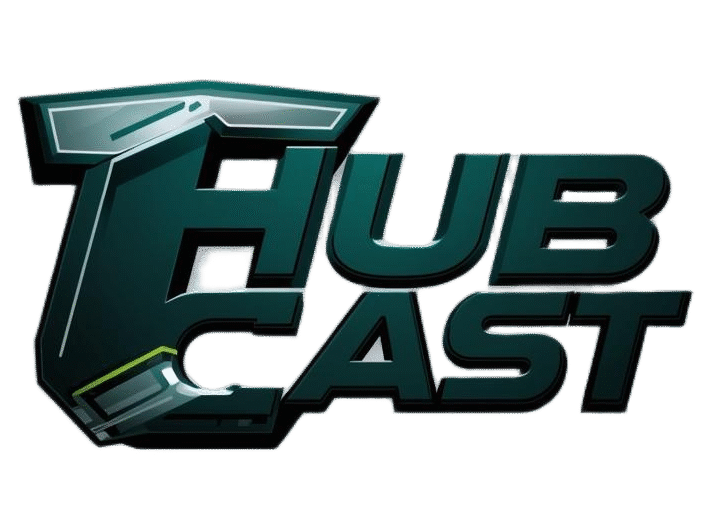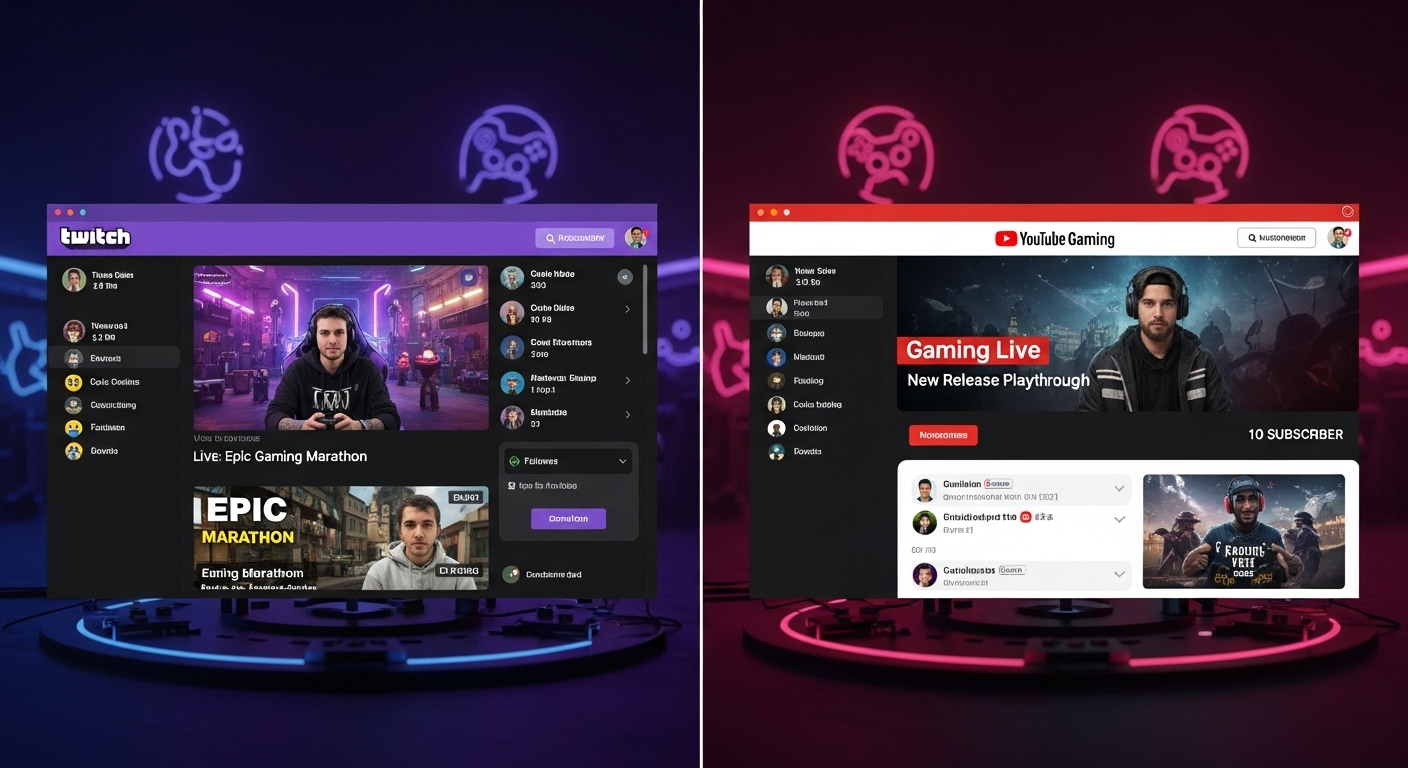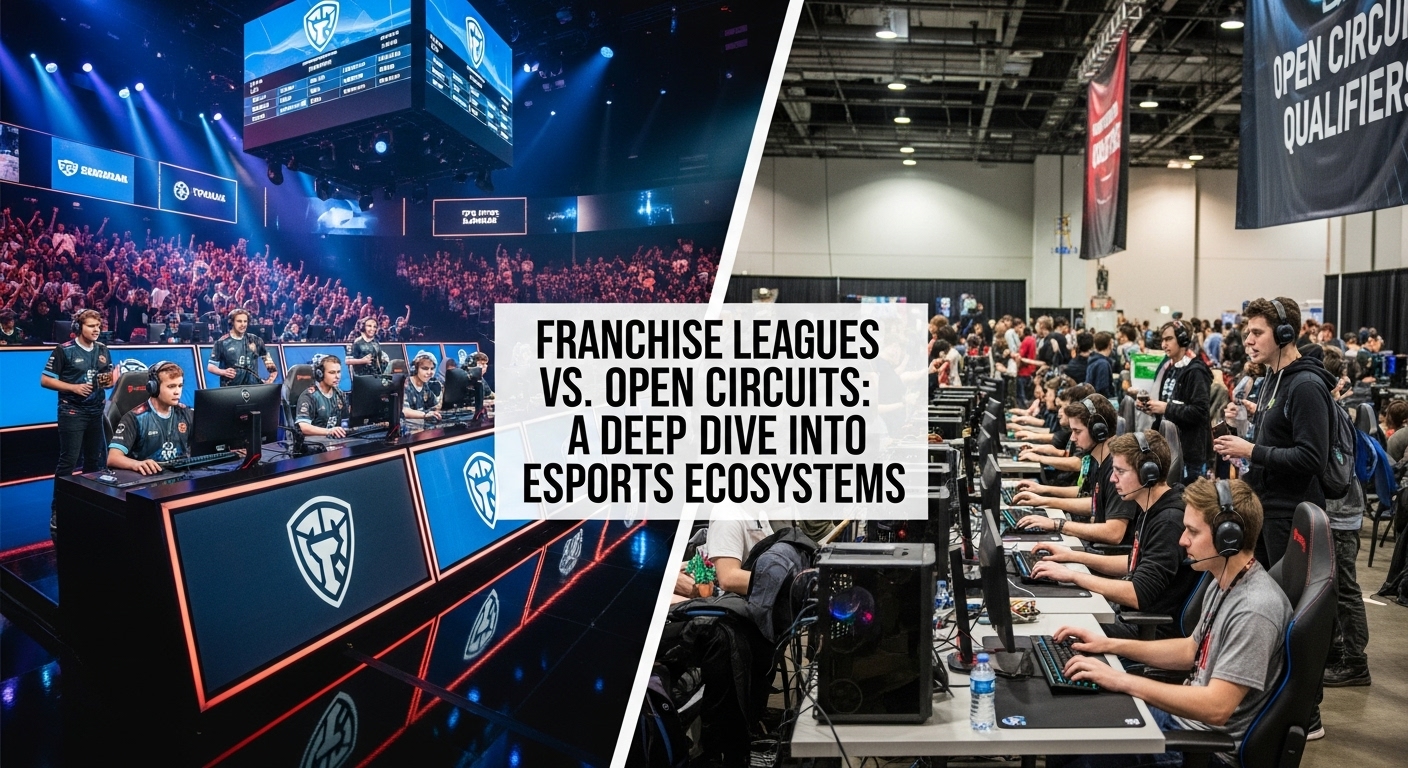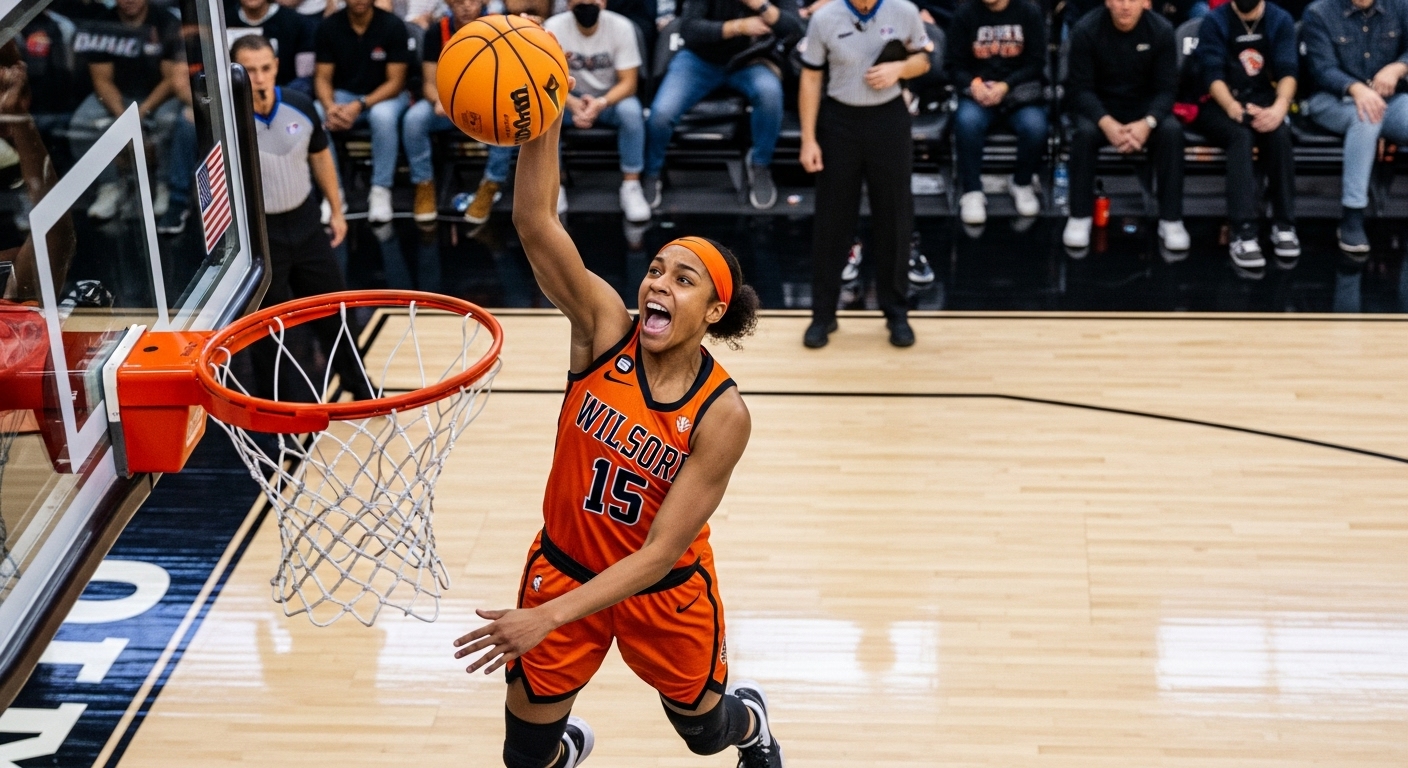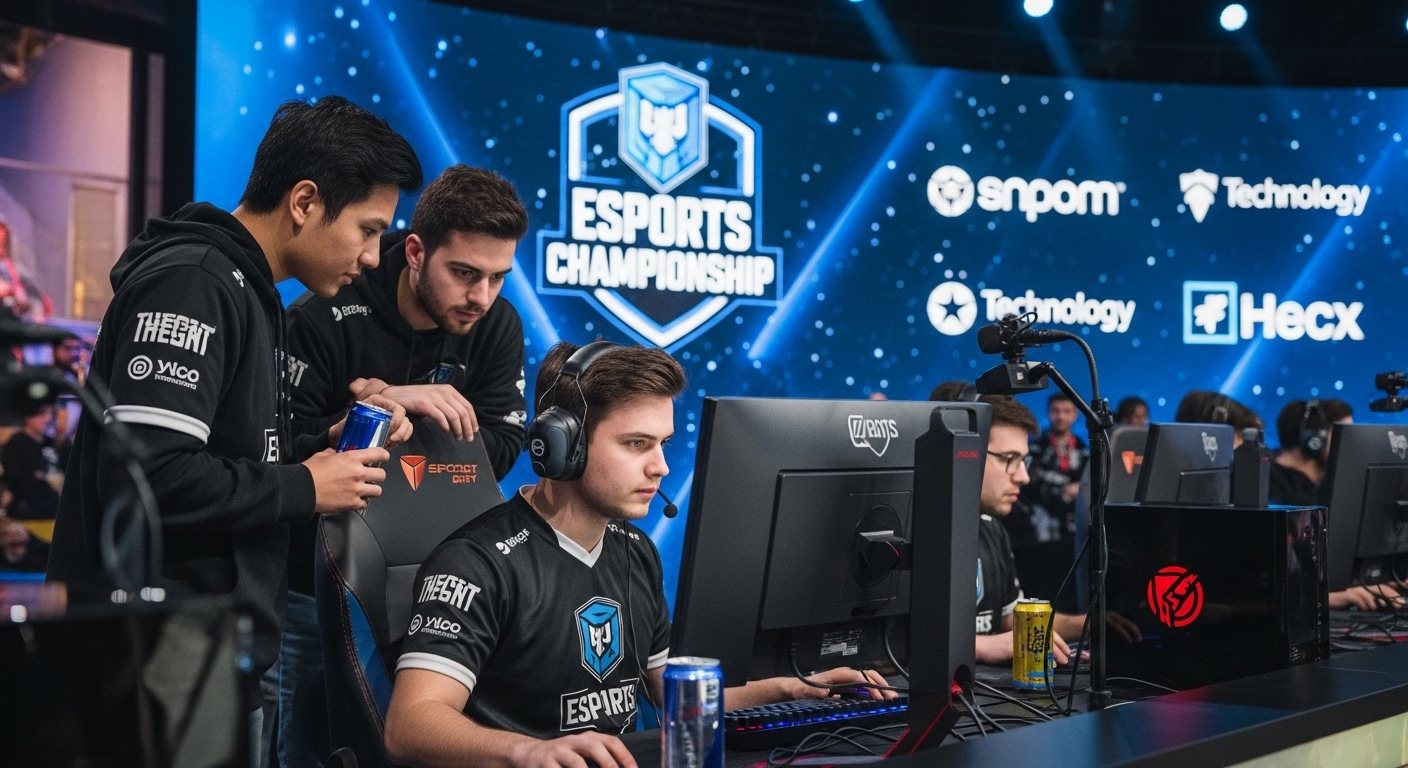Introduction
Over the past decade, video game streaming has evolved from a niche hobby into a global phenomenon. What began as small communities of passionate gamers sharing their gameplay has grown into a billion-dollar industry with millions of creators, professional esports tournaments, and global fanbases. At the heart of this growth are the platforms that host these streams, giving players the stage to showcase their skills, personalities, and creativity.
Among the leading contenders in this digital battlefield are Twitch and YouTube Gaming. Both platforms have millions of users, powerful infrastructures, and global reach, but they take very different approaches to live streaming, content discovery, and community building. For aspiring streamers and curious fans alike, understanding these differences is essential to deciding which platform best suits their needs.
This blog post takes a deep dive into the Twitch vs. YouTube Gaming debate, examining their histories, strengths, weaknesses, monetization systems, communities, and future prospects. By the end, you’ll have a clear understanding of how these platforms shape the streaming industry and where they might be headed.
The Origins of Game Streaming
Before diving into the comparison, it’s important to understand where streaming platforms came from and why they matter.
The Rise of Live Game Streaming
In the early 2010s, gaming content was primarily found on YouTube in the form of pre-recorded videos. Creators like PewDiePie, Markiplier, and Jacksepticeye built massive followings through Let’s Plays, walkthroughs, and comedic skits. However, these videos lacked the immediacy and interactivity that live streaming offers.
Live streaming changed the dynamic completely. Instead of passively watching a video, fans could interact with creators in real-time, ask questions, and feel part of a shared experience. For gamers, streaming became more than entertainment — it was a community-driven activity.
Twitch: The Pioneer
Twitch emerged in 2011 as a spinoff of Justin.tv, a general live streaming website. Focused exclusively on gaming, Twitch quickly became the go-to platform for live content. Its user-friendly chat features, gamer-centric culture, and esports partnerships cemented its dominance.
By 2014, Twitch had grown so large that Amazon acquired it for nearly $1 billion, signaling how important live streaming would become to the future of digital entertainment.
YouTube Gaming: The Challenger
YouTube, already the giant of video content, could not ignore the growing streaming market. In 2015, it launched YouTube Gaming, a dedicated hub for live and pre-recorded gaming content. Leveraging YouTube’s massive infrastructure and existing audience, the platform aimed to rival Twitch directly.
Although YouTube Gaming initially struggled to match Twitch’s dominance, strategic acquisitions of top creators (like Ninja, Valkyrae, and Dr DisRespect at different times) and its deep integration with the broader YouTube ecosystem have kept it in the fight.
Platform Overview
Let’s break down the fundamental aspects of each platform.
Twitch
- Launched: 2011 (as a spin-off of Justin.tv)
- Parent Company: Amazon
- Focus: Primarily live game streaming, though it has expanded into “Just Chatting,” music, and other categories
- User Base: Over 140 million monthly active users
- Unique Features: Emotes, chat moderation tools, Twitch Prime, extensions, raid/hosting systems
YouTube Gaming
- Launched: 2015 (separate app, now integrated into YouTube’s main platform)
- Parent Company: Google
- Focus: Combination of live streams and pre-recorded videos across all types of content, not just gaming
- User Base: Over 2 billion monthly logged-in users (YouTube-wide, with gaming as a major vertical)
- Unique Features: Video on demand (VOD) integration, advanced search engine, algorithm-driven recommendations, monetization through ads and memberships
User Experience and Interface
Twitch: Built for Streaming
Twitch’s interface is designed entirely around live interaction. The homepage showcases live streams, trending games, and recommended channels. Its chat box is central to the experience — colorful, fast-moving, and filled with custom emotes that reflect community culture.
Streamers can also enhance their broadcasts with extensions (interactive overlays like polls, mini-games, or real-time stats), which adds a layer of interactivity that YouTube has been slower to replicate.
However, Twitch struggles with discoverability. Smaller streamers often find it difficult to grow, since Twitch’s recommendation system relies heavily on concurrent viewer counts, meaning established creators are prioritized over newcomers.
YouTube Gaming: Seamless Integration
YouTube’s interface for live streaming isn’t as specialized as Twitch’s, but it benefits from YouTube’s vast ecosystem. Gaming content appears alongside regular videos, making it easier for creators to mix livestreams with pre-recorded content on one channel.
Discoverability is YouTube’s biggest strength. Its recommendation algorithm suggests streams and videos based on user behavior, meaning small or mid-tier creators can grow organically if their content resonates.
On the downside, YouTube’s live chat lacks some of the culture and energy of Twitch’s chat. While features like Super Chats and custom emojis exist, the communal, emote-driven culture isn’t as vibrant.
Community and Culture
Twitch’s Tight-Knit Ecosystem
Twitch is known for its community-first identity. Many streamers build loyal fanbases through constant live interaction. Features like raids (where one streamer sends their audience to another’s channel) foster collaboration and grassroots growth.
Twitch chat also has its own language, built around emotes like “Kappa” and “PogChamp.” These have become cultural symbols in gaming communities worldwide.
However, Twitch’s culture can also be intense and at times toxic. The platform has struggled with issues like harassment, moderation, and inconsistent enforcement of community guidelines.
YouTube’s Broader Appeal
YouTube Gaming taps into the wider YouTube culture, which includes billions of users across diverse genres. This means gaming creators have access to a larger potential audience than Twitch.
YouTube’s culture tends to be less insular and more content-focused. Fans follow creators not only for live streams but also for highlights, shorts, and other types of videos. This cross-content integration makes YouTube more versatile, though it lacks Twitch’s strong sense of live-only community.
Monetization: How Streamers Earn
Twitch
Twitch offers multiple monetization streams:
- Subscriptions: Viewers can subscribe at tiers ($4.99, $9.99, $24.99) to support their favorite streamers and gain perks like custom emotes.
- Bits: A virtual currency viewers can purchase and spend to “cheer” in chat.
- Ads: Streamers can earn revenue through mid-roll and pre-roll ads.
- Donations: Many streamers use third-party platforms like Streamlabs for direct donations.
- Twitch Prime: Amazon Prime members get one free subscription each month, boosting streamer income.
The downside? Twitch takes a 50/50 revenue split on subscriptions, which many streamers find unfavorable. Only top-tier creators negotiate better terms.
YouTube Gaming
YouTube provides several monetization avenues as well:
- Super Chats and Super Stickers: Viewers can pay to highlight their messages in chat.
- Channel Memberships: Similar to Twitch subscriptions, with tiered perks.
- Ad Revenue: Integrated into YouTube’s existing ad ecosystem, which is massive.
- Merch Shelf: Direct integration for selling merchandise.
- YouTube Premium Revenue: Creators earn a share of revenue from Premium subscribers watching their content.
YouTube takes a 70/30 split (creators keep 70%), which is more favorable than Twitch’s default.
Growth Opportunities for Streamers
On Twitch
Pros:
- Strong community features encourage loyalty
- Best for dedicated live streaming careers
- Esports and gaming events are heavily integrated
Cons:
- Poor discoverability for small creators
- Reliance on live streaming makes growth difficult if you can’t stream consistently
- Revenue split less favorable
On YouTube
Pros:
- Better discoverability thanks to algorithm-driven recommendations
- Versatility: creators can mix streams, shorts, and videos on one channel
- Higher revenue share (70/30)
- Evergreen content: streams can be repurposed into highlights and searchable videos
Cons:
- Less community-driven culture
- Live streaming tools are less advanced than Twitch’s
- Harder to stand out in the massive YouTube ecosystem
The Esports Factor
Esports plays a huge role in streaming platforms’ success.
- Twitch: Historically, Twitch has been the go-to platform for esports tournaments, from League of Legends Worlds to CS:GO Majors. Its real-time features and massive gaming-first audience make it a natural fit.
- YouTube Gaming: Recently, YouTube has secured exclusive rights to major events, such as Call of Duty League and Overwatch League. These deals bring in huge audiences and legitimize YouTube as a serious competitor in the esports broadcasting space.
The battle for esports rights will likely continue shaping the rivalry between these platforms.
Platform Challenges
Twitch’s Challenges
- Revenue Split: The 50/50 cut remains controversial.
- Moderation Issues: Harassment, hate raids, and content violations are persistent problems.
- Competition: Losing top creators to YouTube or other platforms creates instability.
YouTube’s Challenges
- Live Streaming Culture: Struggles to replicate Twitch’s community feel.
- Interface: The live streaming experience is less polished compared to Twitch.
- Focus: As YouTube isn’t gaming-exclusive, creators compete with every other content category for attention.
The Future of Streaming: Where Are We Headed?
The rivalry between Twitch and YouTube Gaming is far from over. Both platforms have room for improvement and unique strengths to capitalize on.
- Twitch’s Future: If Twitch improves discoverability and revises its revenue split, it could maintain its dominance as the home of live streaming. Its culture, emote system, and community-driven tools are difficult to replicate elsewhere.
- YouTube’s Future: YouTube will likely continue leveraging its massive ecosystem to lure streamers. Its superior discoverability and higher revenue share make it appealing, especially for creators who want sustainable growth.
Ultimately, the two platforms may coexist, serving slightly different audiences. Twitch will remain the go-to for dedicated live content, while YouTube Gaming will thrive as a hybrid of live and on-demand video.
Conclusion
The battle of Twitch vs. YouTube Gaming reflects a larger trend in digital entertainment: the shift from passive consumption to interactive, community-driven experiences. Twitch, as the pioneer, built a culture around live gaming that still defines the industry. YouTube, with its vast reach and algorithm-driven recommendations, offers a powerful alternative with broader appeal.
For streamers, the decision between Twitch and YouTube Gaming depends on their goals:
- Want to build a live-first, community-focused career? Twitch is the place to be.
- Want versatility, better discoverability, and long-term growth potential? YouTube Gaming might be the smarter choice.
As both platforms evolve, one thing is certain: live streaming is here to stay, and the battle between Twitch and YouTube Gaming will continue shaping the future of online entertainment.
